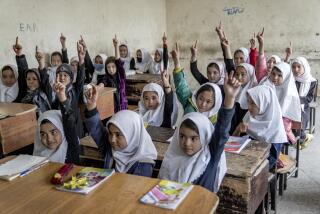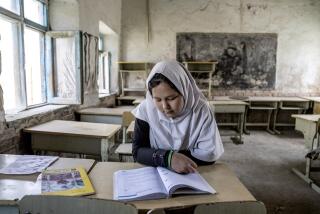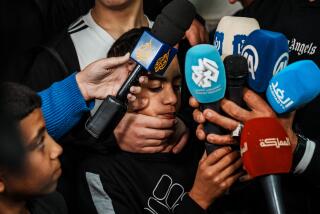Students in Syria are a textbook case for post-Islamic State reeducation
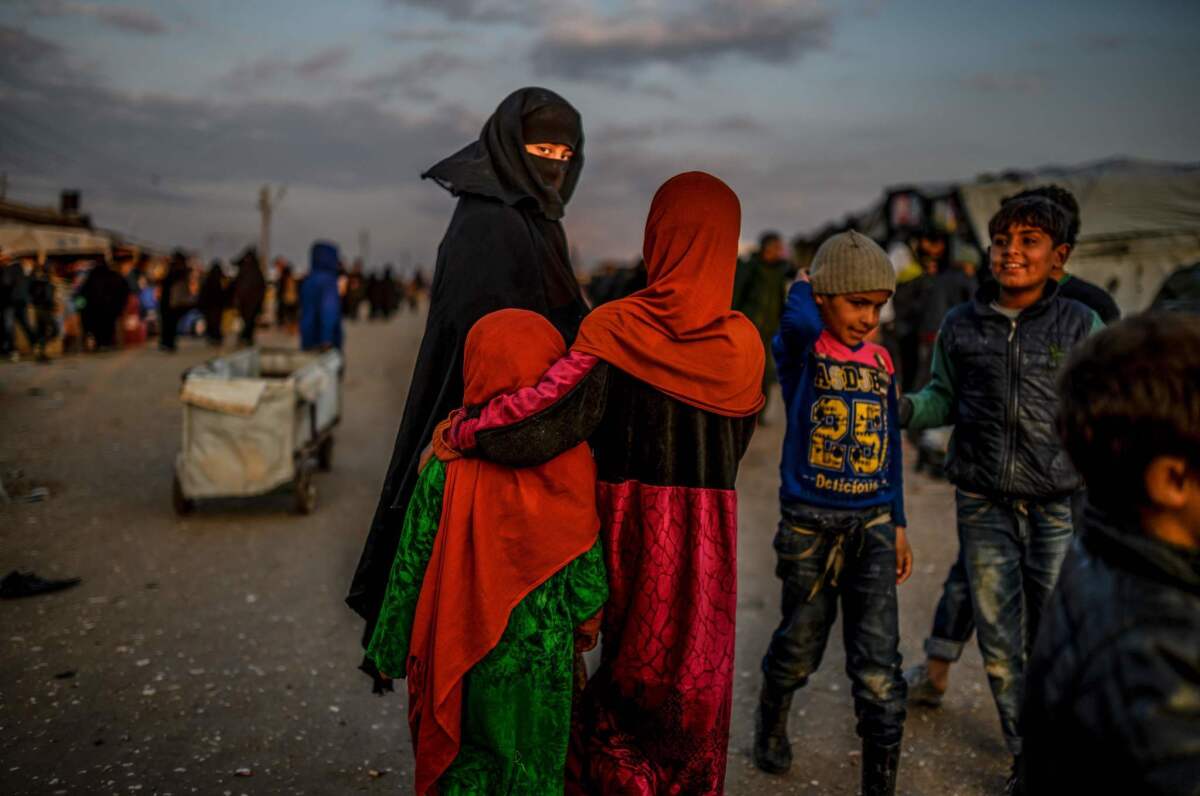
Reporting from Beirut — There’s a saying in Arabic: Learning while young is like carving in stone. (It rhymes in the original.)
The saying has come to the fore as authorities begin efforts to reeducate about 25,000 school-age children being held in Al Hol, the desolate internment camp on the edge of eastern Syria for members of Islamic State’s so-called caliphate and refugees from the communities the militant group controlled in Syria and Iraq.
With the radical group having lost the last of the land it controlled after nearly five years of warfare, authorities now face the challenge of reeducating the children of the militant fighters, most of them schooled from an early age in Islamic State’s barbaric ways.
Over those years, the children were taught with textbooks that glorified the group’s fighters and their “conquests,” trained to use small firearms and grenades and provided intense religious studies based on extremist interpretations of Sunni Islam. Educators must now figure out how to get through to youngsters who were systematically radicalized and militarized in all the territories held by Islamic State, which, at its zenith, controlled a full third of Syria and Iraq each.
Moreover, these children represent a minuscule — though probably the most troublesome — portion of what have been referred to as “Syria’s lost generation”: the millions of schoolchildren who have lost out on some or all of their formal education during the nation’s eight-year civil war.
The scale is staggering: 2.1 million children in Syria are out of school and an additional 1.3 million are at risk of dropping out, aid agencies say. One in 3 schools in Syria is either damaged or destroyed, and a third of those still standing have been turned into makeshift centers for the displaced or military bases.
That, along with more than 140,000 educators having left their posts to fight or flee, swelled class sizes to 150 students per teacher in some areas of the country. In former rebel enclaves long besieged by the Syrian military, some teenagers don’t know how to write their names or even hold a pen, according to Save the Children, a nongovernmental organization focusing on children’s rights.
Most of those who have been able to remain in school have received a mere patchwork education, the consequence of incessant fighting among myriad groups seeking control of Syria.
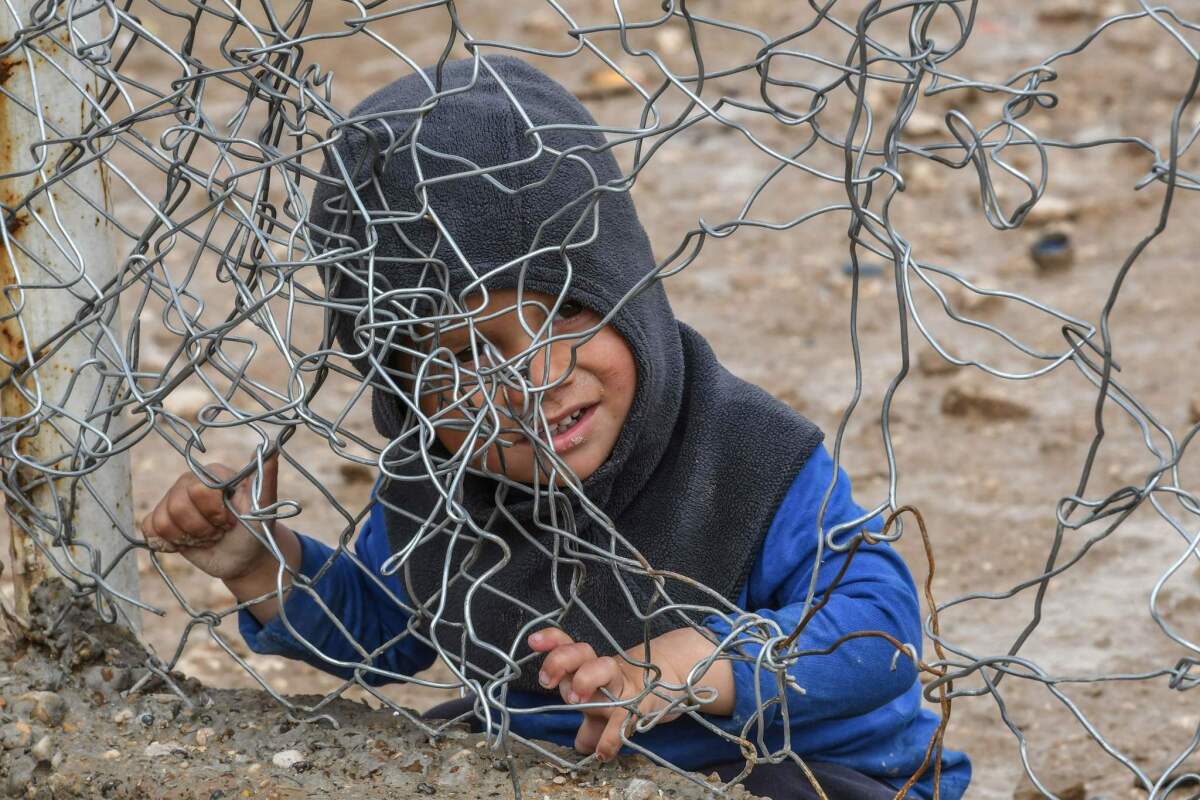
These children escaped from ISIS captivity, but there is no joy in their return home »
In their time under Islamic State, the children crowding Al Hol’s dust-swept tents were given a syllabus suffused with the militant group’s ideology, a toxic interpretation of Sunni Islamic precepts.
They were the caliphate’s children, groomed to be the next generation of the extremists’ project; the ones who would expand Islamic State from its base covering a third of Iraq and Syria each, with about 8 million people under its rule, to “conquer Constantinople and Rome,” as the group’s spokesmen often vowed.
Their curriculum reflected that aim.
Islamic schoolbooks captured by Iraq’s military intelligence directorate show drawings of the group’s black-clad fighters on pages devoted to arithmetic, elementary English and physical education. An exercise for telling time includes a drawing of a bomb — sticks of dynamite attached with a wire to clock faces.
In the northwestern province of Idlib, still under the control of hard-line Islamist rebels’ so-called salvation government, the curriculum depends on which rebel faction is in charge, said Ahmad Qteini, an education administrator in the town of Khan Sheikhoun, by phone Thursday.
“We used one syllabus from the regime, one from the salvation government, one … no, two from the [rebels’ Turkey-based] provisional government,” said Qteini. A syllabus from an Islamic State school would be heavy on religious instruction; one from another anti-government area would excise all references to Syrian President Bashar Assad and landmarks named after him.
“You would see different books from village to village, even sometimes in neighboring schools.”
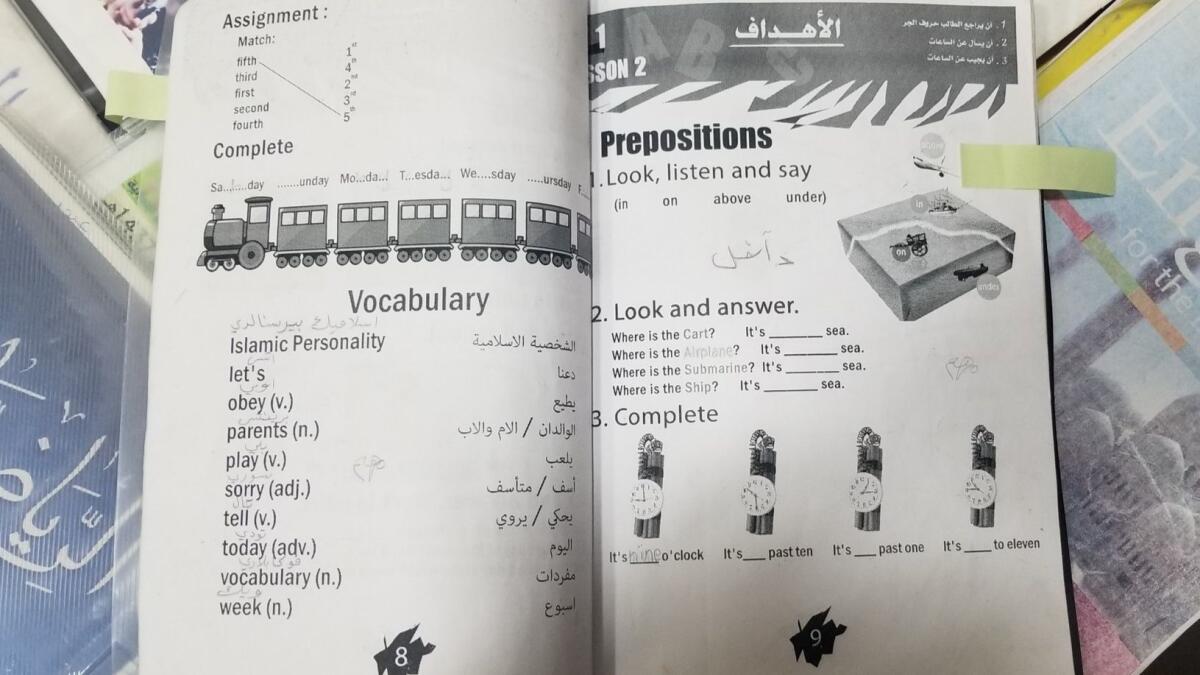
Taking a test could prove a life-threatening choice, said Qteini, explaining that some students traveled to government-controlled areas in order to sit for standardized school exams.
On the other hand, students who chose to take their exams in rebel-held areas were under threat of airstrikes from Russian and Syrian government warplanes. (Qteini said that children in Idlib haven’t attended school in two months because of a recent escalation in fighting in the province).
The effects of Syria’s ravaged education system have spilled over the country’s borders.
In 2018, of the nearly 2 million school-age Syrian children living as refugees in Lebanon, Jordan, Turkey, Iraq and Egypt, almost a third weren’t enrolled and most had seen their education disrupted multiple times.
Schools in those countries, most of them with already struggling public education systems, have been forced to hold double shifts to accommodate the influx of students.
For Jihad Rahila, principal of Al-Khawlah bint al-Azwar school just outside Amman, Jordan, those numbers have often meant playing catch-up.
“You have to compress an entire grade in one semester. You have to cram the material,” she said as she jovially fended off a steady trickle of students, parents and teachers coming to her office. “And you can’t fulfill all the skills. They go into their grade and they’re still not fully in control of the material.”
Many come with incorrect or no documentation, making it difficult to assess which grade they should enter, Rahila added.
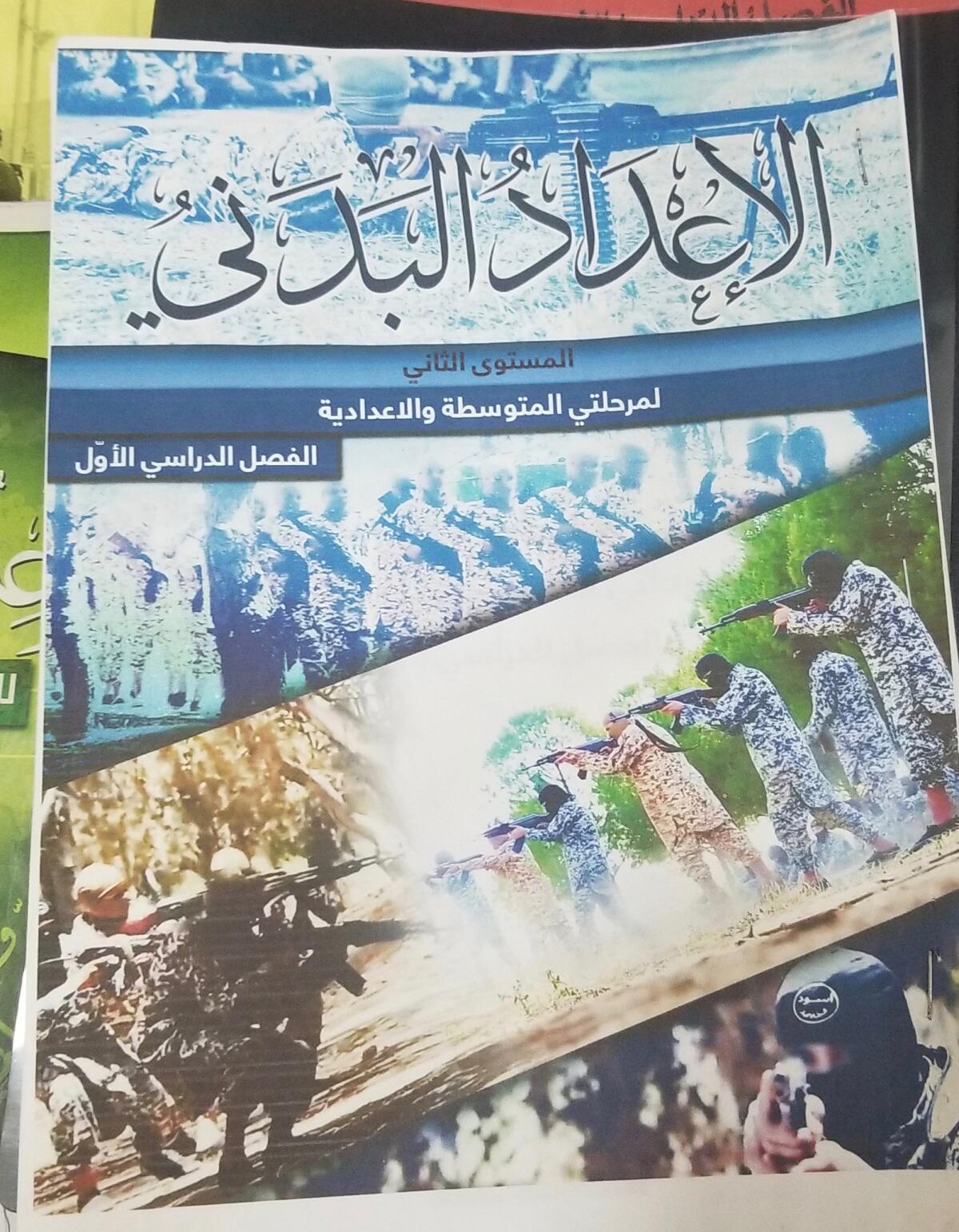
“When you look at the statistics of end-of-year exams, Syrian refugee children are getting lower marks,” said Lilly Carlisle, a spokeswoman with the United Nations refugee agency in Jordan.
Effects of the warfare often go beyond the academic.
Abdullah, a 6-year-old with a shiny pompadour of slicked-back hair, walked to the corner of a classroom at the Khawlah school.
“He likes to be alone sometimes. Whenever he hears a loud sound, he goes to the corner,” said teacher Sabreen abu Joudeh, smiling as she gently tugged at his arm.
Mercy Corps, an aid agency, supports the Khawlah school with equipment and training to handle children with psychological scars or physical wounds, and is the only institution in the district able to accommodate disabled students.
In Jordan, children displaced from lands that fell under Islamic State’s dominion, including those who are now disabled, are segregated in an area known as Village 5, a sectioned-off cluster of prefabricated huts in the U.N.’s refugee camp in Azraq, about an hour’s drive east of Amman. Authorities view those refugees with suspicion and fear the group’s operatives remain hidden within their ranks.
Unlike residents in the camp’s other sections, those held in Village 5 can’t leave except with a special permit, nor are they able to visit Azraq’s well-stocked supermarket or its refugee-run mercantile stalls.
Rather, they remain under the scrutiny of Jordanian intelligence and other security personnel; everything coming in or out — including school supplies — requiring authorization.
It was only last year that Village 5 got electricity and internet. It still has less equipment than its counterparts in other parts of the Azraq camp.
The cumulative result, said Joelle Bassoul, regional media manager for the nongovernmental group Save the Children, is “that a whole generation of young people will not be equipped to rebuild their country.”
“Saying that 2.1 million children in Syria are currently out of school isn’t just stating a number. So many children we speak to tell us that their dream is to live in a country at peace and rebuild their home,” she said.
“How can they do that if they can’t read and write?”
More to Read
Sign up for Essential California
The most important California stories and recommendations in your inbox every morning.
You may occasionally receive promotional content from the Los Angeles Times.
